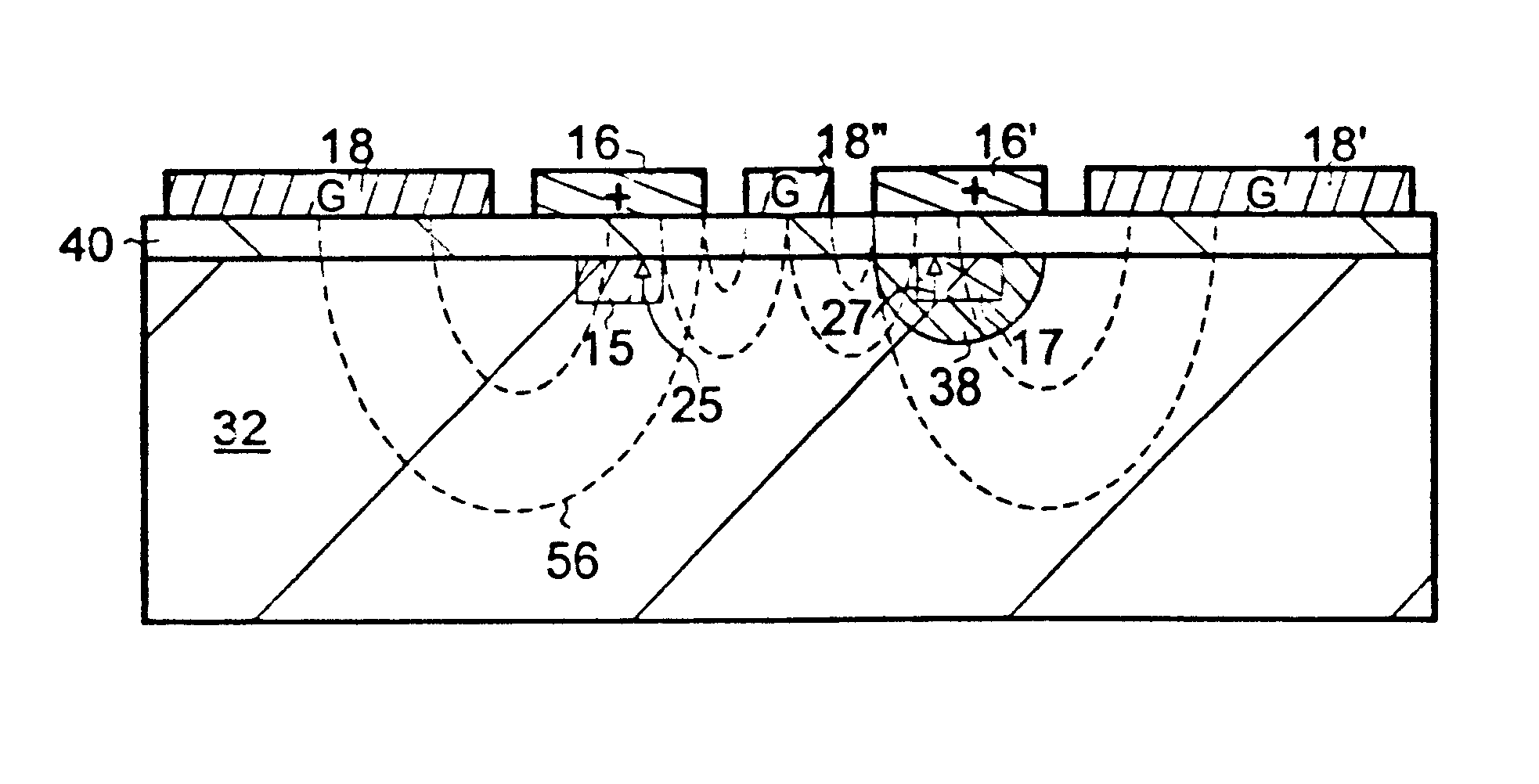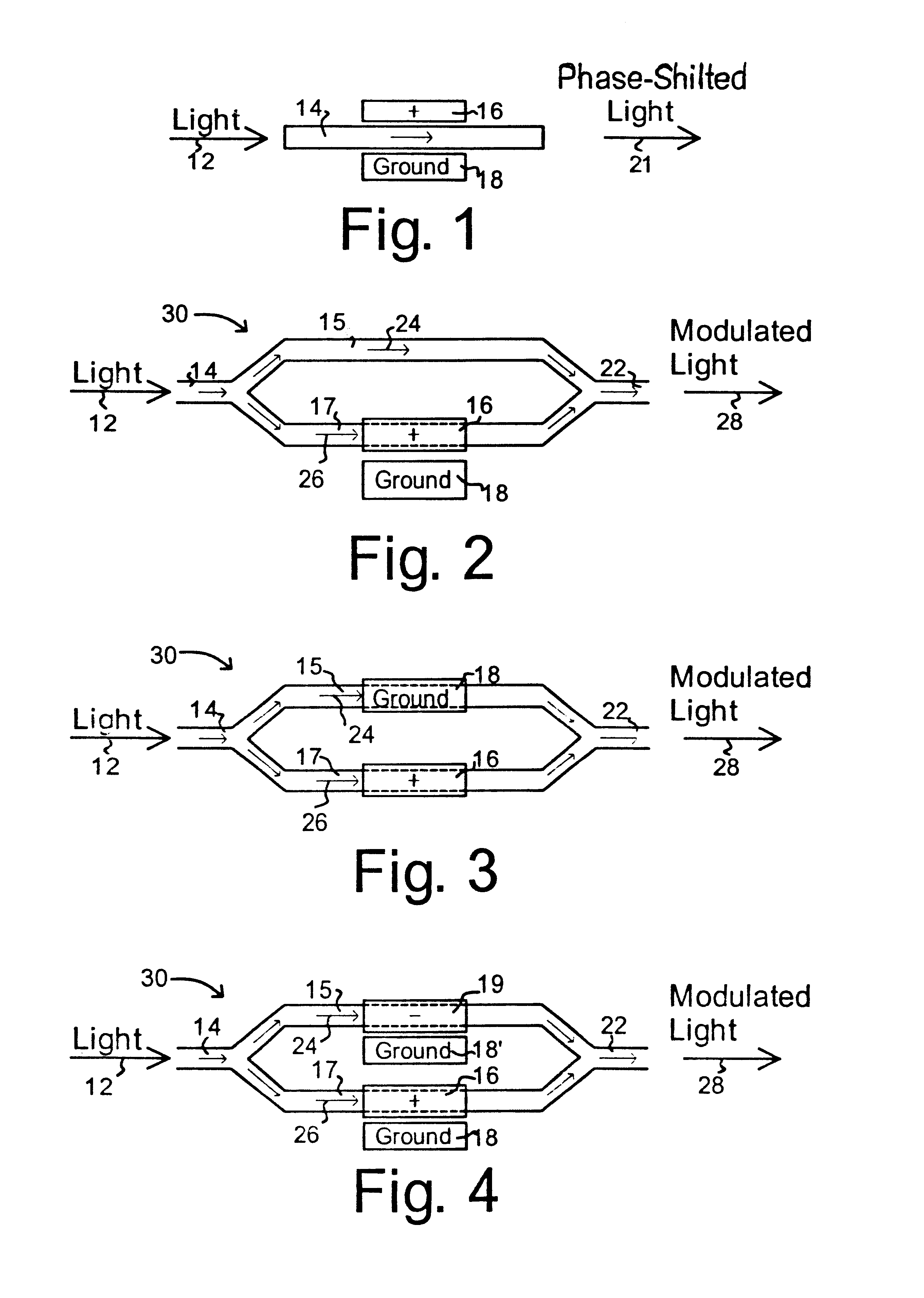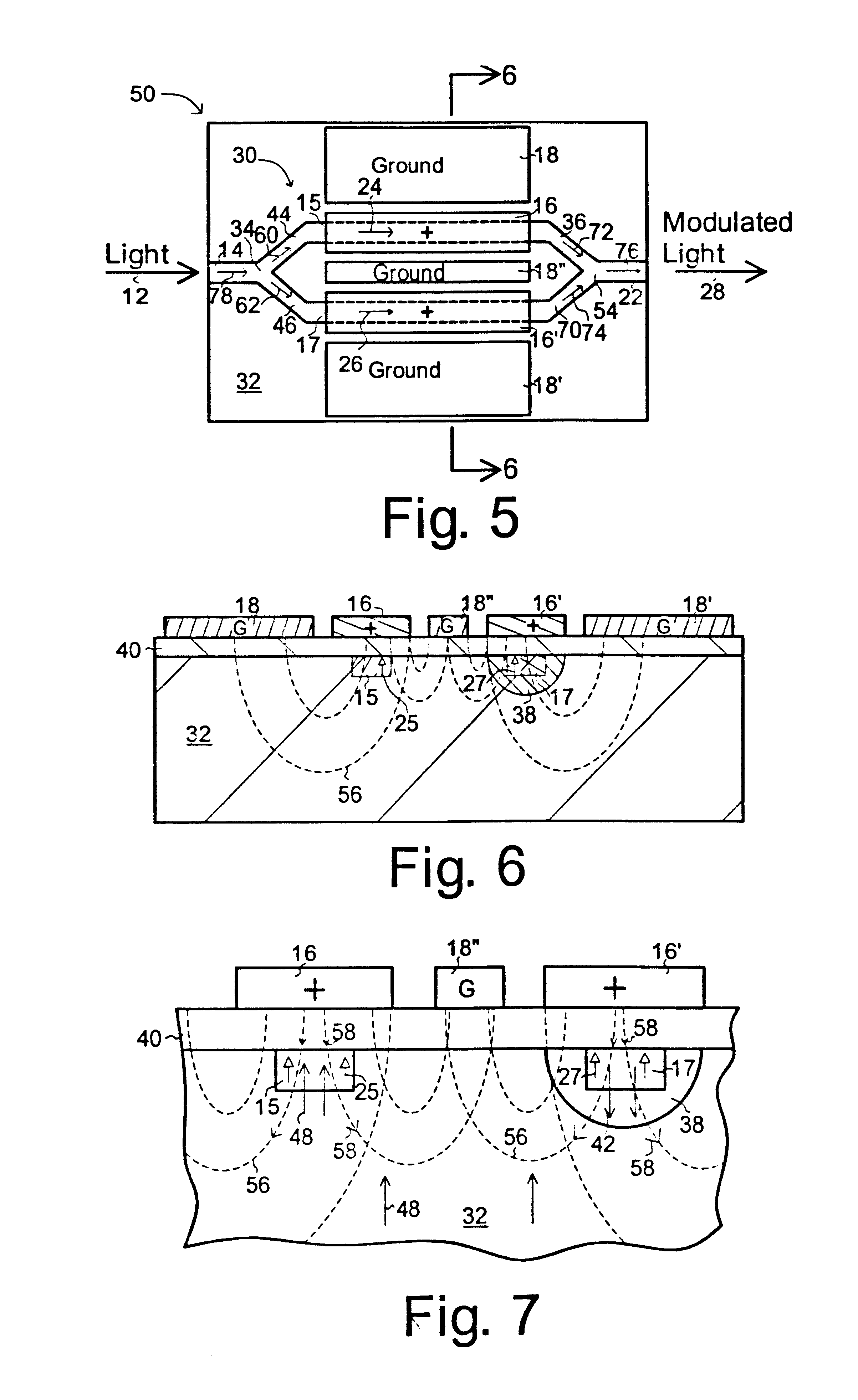Optical modulator
a technology of optical modulator and optical waveguide, applied in the field of fiber optics, can solve the problems of non-observation of signal electrical field, decreased modulation bandwidth, non-uniform electronic, etc., and achieve the effect of increasing the transmission speed of the system, increasing the distance of the transmitted signal, and reducing the size of the electro-optical modulator
- Summary
- Abstract
- Description
- Claims
- Application Information
AI Technical Summary
Benefits of technology
Problems solved by technology
Method used
Image
Examples
Embodiment Construction
Generally two types of electro-optical modulators are currently in use, the phase modulator and the intensity modulator, which are shown generally in FIGS. 1 and 2. Both devices take advantage of the change in refractive index in a crystalline waveguide due to an applied voltage. In the optical, guided-wave phase modulator shown in FIG. 1, light 12 enters and travels along the waveguide 14 that has been placed between signal electrode 16 and ground electrode 18. An applied voltage at the signal electrode 16 introduces a change in the refractive index of the waveguide 14 which in turn alters the velocity of light passing through the waveguide causing a phase-shift in the emerging light 21 that is proportional to the applied voltage.
In FIG. 2, a guided-wave Mach-Zehnder (M-Z) interferometer intensity modulator 30 is used. Here light 12 enters waveguide 14 and is then split between two waveguide paths 15 and 17 and then joined again to leave via outlet guide 22. As with the phase-shift...
PUM
| Property | Measurement | Unit |
|---|---|---|
| thick | aaaaa | aaaaa |
| dielectric constant | aaaaa | aaaaa |
| reverse polarity | aaaaa | aaaaa |
Abstract
Description
Claims
Application Information
 Login to View More
Login to View More - R&D
- Intellectual Property
- Life Sciences
- Materials
- Tech Scout
- Unparalleled Data Quality
- Higher Quality Content
- 60% Fewer Hallucinations
Browse by: Latest US Patents, China's latest patents, Technical Efficacy Thesaurus, Application Domain, Technology Topic, Popular Technical Reports.
© 2025 PatSnap. All rights reserved.Legal|Privacy policy|Modern Slavery Act Transparency Statement|Sitemap|About US| Contact US: help@patsnap.com



